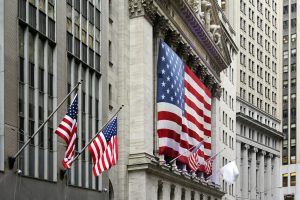The Power of Inflationary Hedging
Posted onThe hot topic in the financial world today is inflation, namely which way it’s going to go. For years it has been curiously low, but that might be changing and if so, implications for gold are significant.

Since December 2015 the Fed has increased the benchmark short-term rate five times ranging between 1.25% and 1.5% Meanwhile, inflation remains stubbornly low as Fed officials continue to attempt to reach their 2% goal. Recent numbers, however, indicate they might be making progress.
“Prices excluding volatile food and energy categories rose 2.6% in January on a six-month annualized basis, up from a 1.1% gain in July and one of the strongest periods in years,” explains the WSJ. The result: “We think that it is a good time to own the precious metals,” remarked the president of EverBank World Markets. “We are seeing a burgeoning middle class and more disposable income in India and China, which should lead to more physical demand,” he continued. However, for many, the motivation to hold gold as an inflationary hedge against anticipated rises in inflation is just one part of the picture. Recent stock market volatility has prompted many to revisit their asset class allocation.
While analysts’ outlooks for the medium term are still largely positive, the pervasive expectation is that we’re entering a period of increased volatility. Equity investors will probably see gains, but the terrain they must cross to get there will be rocky.
Some of the volatility we’ve already seen stems from wage data. That is, payroll reports showed a 2.9% gain in average hourly earnings marking the highest annual rise since 2009. This news incited a sell-off in the equities market. Investors, it seems, fear that rising labor costs will defray corporate profits and temper share price appreciation. As a result, gold experienced a 1.6% increase on Wednesday while gold futures began trading at multi-year highs.
Meanwhile, many expect the Fed to make a minimum of three more interest rate increases this year. These expectations, however, are somewhat obscured by uncertainty surrounding the new Fed chairman Jerome Powell. Just weeks into his position, many are waiting to see how he behaves in response to the markets and broad economic data. At the same time, few expect any wild moves. Jerome and his staff have cited their intention to rigorously review all data before making any impactful decisions regarding rates.
“The market is starting to fall in love with inflation trades again. Gold could be the standout performer this year if that’s the case,” remarked the head of portfolio management services at Adroit Financial Services.
In these modern times, however, we have other options like headline-grabbing Bitcoin. Can the digital currency also act as an inflation hedge? Likely not. As the Financial Times puts it, gold is “Universally accepted as a global and long-term store of value and one that doesn’t demand a password when you want to dig it out from under your bed. It’s pretty; it’s useful; it’s really hard to fake; it’s easy to change into a fractional currency; and, crucially, it has history. An ounce of gold has, give or take, hung on to its purchasing power for thousands of years.”







